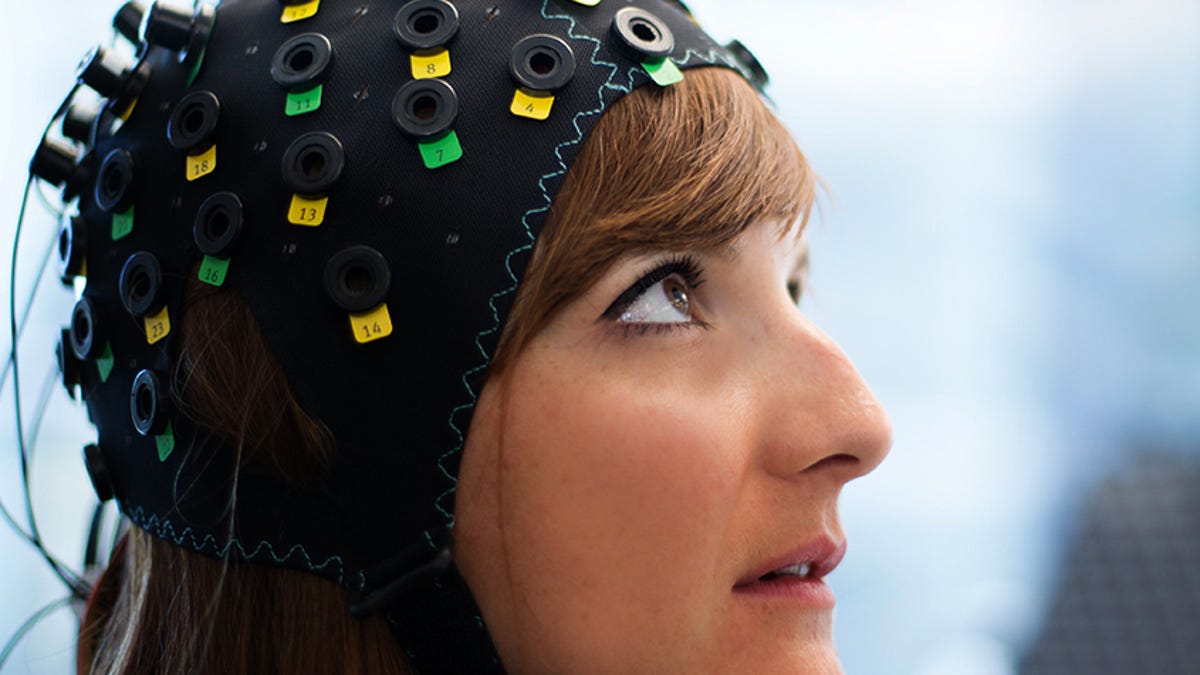EEG cap allows completely paralyzed patients to communicate
A noninvasive brain-computer interface has allowed a number of locked-in people to communicate with the outside world. They say they're happy.

A model wearing the team's cap.
Non-invasive caps look like the newest tool that could allow completely paralyzed people to communicate with the outside world.
An international team of researchers, led by Niels Birbaumer of the Wyss Center for Bio and Neuroengineering in Geneva, have just published a paper in PLOS Biology detailing their success in communicating with four people with amyotrophiclateral sclerosis, a degenerative motor neuron disease that eventually leaves patients completely paralyzed.
The four patients in the study were considered completely locked in, unable to move even their eyes voluntarily. Yet with the system designed by Birbaumer and his team, they were able to answer easy "yes" and "no" questions simply by thinking the answers, delivering correct responses seven times out of 10.
A previous system, detailed in November 2016, used a brain implant to give a woman with ALS the ability to communicate.
This new system, in contrast, is completely noninvasive. Instead, it uses near-infrared brain spectroscopy and electroencephalography to monitor changes in the brain's blood oxygenation and electrical activity. The subjects were trained with the caps so that the translation software could learn each individual's brain activity patterns for "yes" and "no."
For the actual study, they were asked to give responses to questions such as "Berlin is the capital of France" and "Your husband's name is Joachim." Birbaumer was surprised at the results.
"The striking results overturn my own theory that people with complete locked-in syndrome are not capable of communication," he said in a statement.
"We found that all four people we tested were able to answer the personal questions we asked them, using their thoughts alone. If we can replicate this study in more patients I believe we could restore useful communication in completely locked-in states for people with motor neuron diseases."
They also asked the patients repeatedly over weeks of questioning if they were happy. All four patients consistently responded "yes."
"All four had accepted artificial ventilation in order to sustain their life when breathing became impossible so, in a sense, they had already chosen to live. What we observed was as long as they received satisfactory care at home, they found their quality of life acceptable. It is for this reason, if we could make this technique widely clinically available, it would have a huge impact on the day-to-day life of people with complete locked-in syndrome," Birbaumer said.
Solving for XX: The industry seeks to overcome outdated ideas about "women in tech."
Special Reports: All of CNET's most in-depth features in one easy spot.

